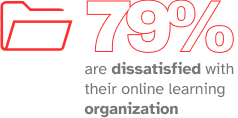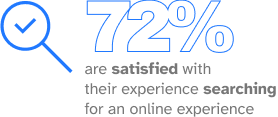Reflection
My focus for this project was to practice making data driven design decisions. I did the best I could with the knowledge and resources I had at the time, however upon reflection, I’ve come to notice some of the things I would do differently to help understand the problem space more thoroughly and in turn, make better design decisions.
This project really helped me understand the importance of user research and creating a strategy as well as what happens when those steps are overlooked. Unfortunately, early on in the project, I made the mistake of not diving deep enough into discovering problems people face when self-directed online learning. Most of this was due to falling into the trap of clinging to the excitement of my initial ideas about what the solution could be, and the motivation that my ideas gave me. This trap caused me to base a majority of my research on those ideas, instead of discovering problems.
Because I didn’t dive deep enough into the discovery and research, I struggled to feel confident in my design decisions and lacked a solid strategy going into the design phase. I feel my research had been too shallow and focused on problems related to my ideas, rather than going further to try and discover what I didn’t already know.
I decided to take a course on user research and strategy because of this. Through the course I learned the importance of discovery through user interviews, and the subsequent exercises and artefacts such as affinity mapping, personas, customer journey mapping, and competitor analyses. Then taking the insights gained and creating a strategy to solve peoples problems with a product or service.
Had I gone through a more solid user research and strategy process, using the methods mentioned above, I would’ve felt more confident in making design decisions that were backed by solid insights. In hindsight, it would’ve been better to reel back my initial excitement to design a solution, and instead taken the time to branch out further to discover what self-directed online learners really needed.


